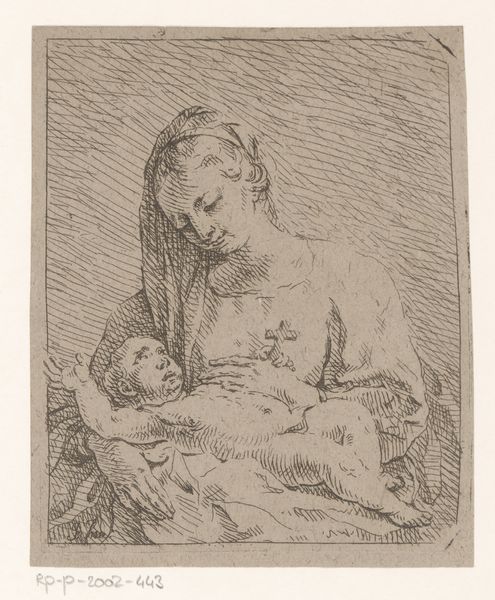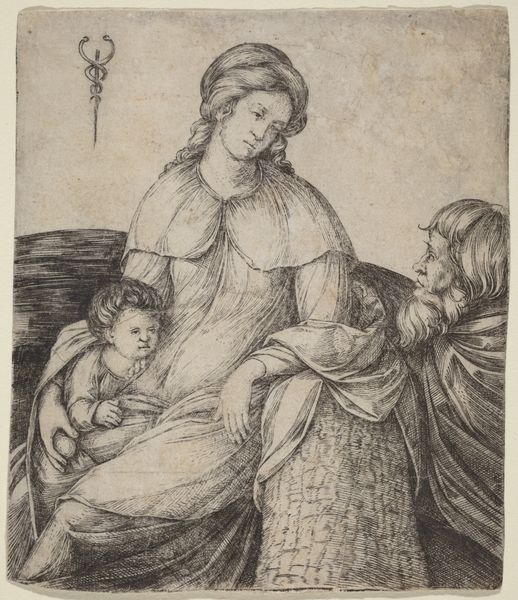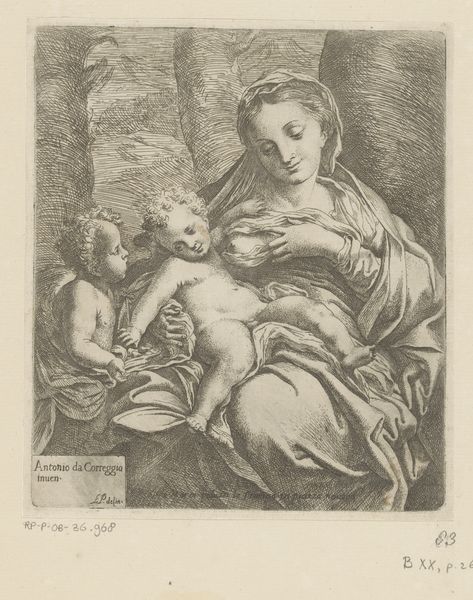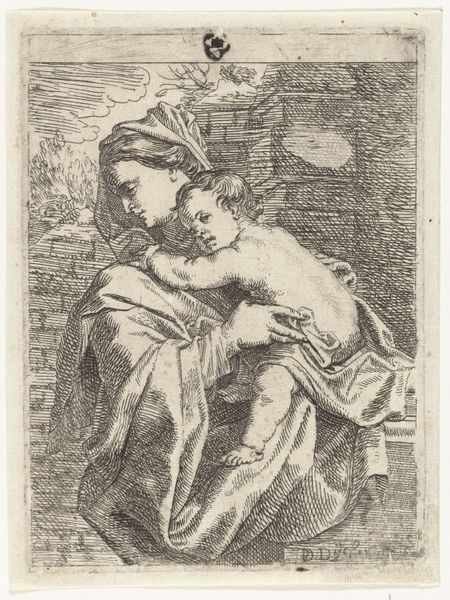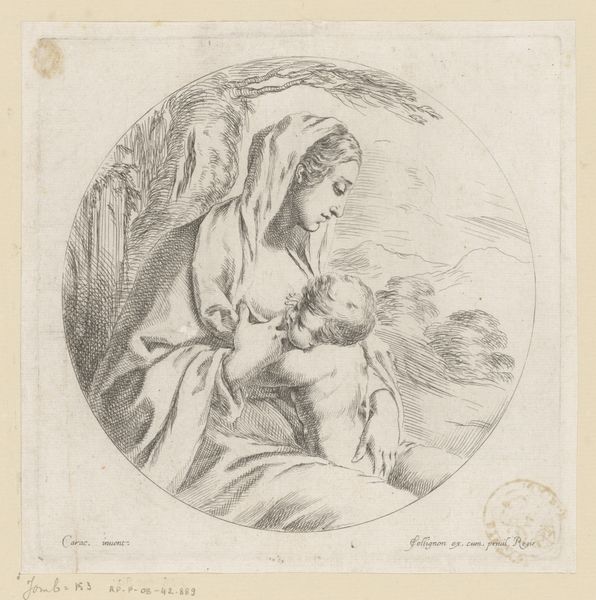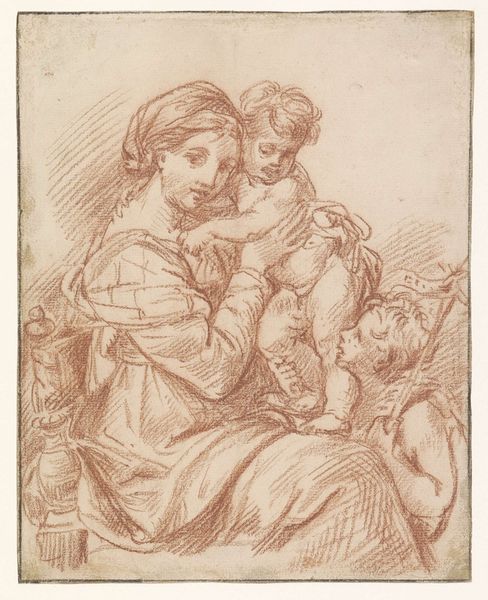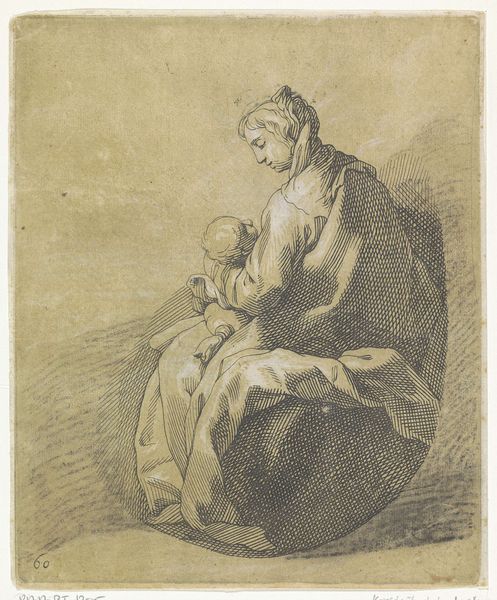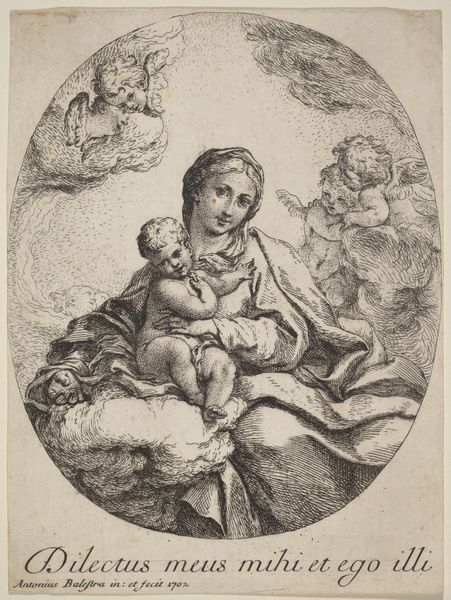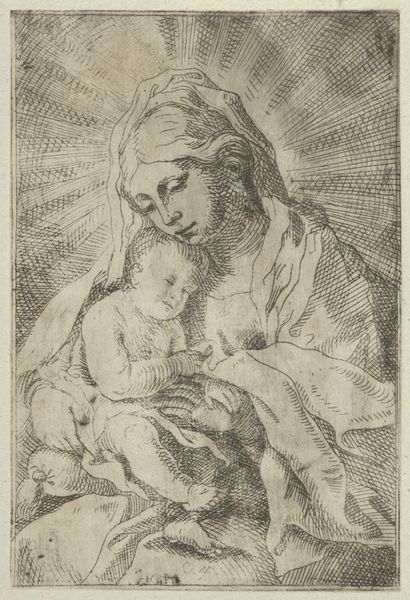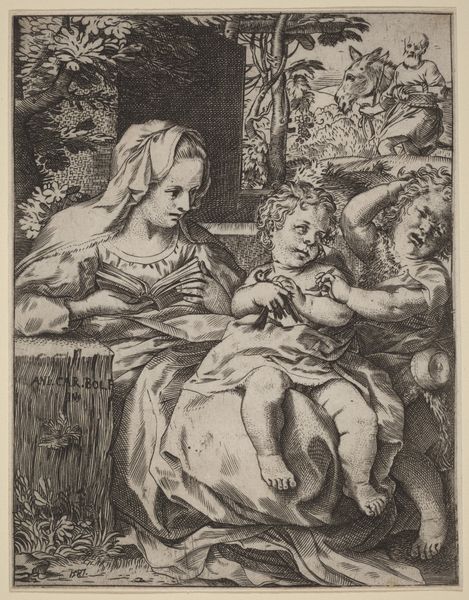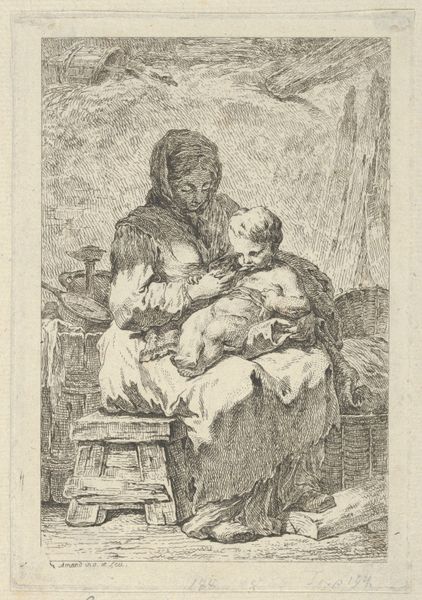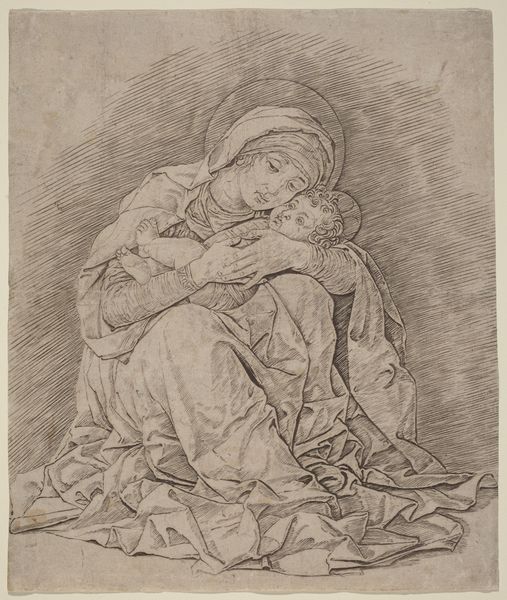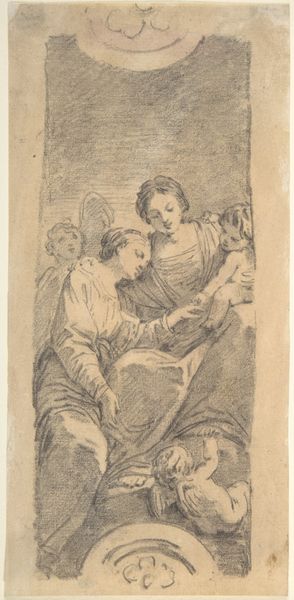
Dimensions: height 146 mm, width 64 mm
Copyright: Rijks Museum: Open Domain
This print of the Madonna and Child was made by Johann Anton de Peters, probably in the late 18th century, using etching. This is an intaglio printmaking technique, where a metal plate, likely copper, is coated with a waxy, acid-resistant substance called a ground, and an image is then scratched into that ground with a needle. The plate is then submerged in acid, which bites into the metal where it has been exposed. Notice how the etched lines have a delicate, almost hand-drawn quality, due to the artist's control over the needle. The depth of the lines varies, allowing the printer to create a sense of light and shadow. This allowed for the efficient production of images, and the relatively low cost of prints made them accessible to a wider audience. In this work, de Peters engaged with the established aesthetic and tradition of fine art through etching, though its own history belongs to the creative practices, aesthetics, and social contexts of printmaking. The ability to reproduce images democratized art, allowing for wider dissemination of ideas. The production of prints like these reflects the changing landscape of art in the 18th century.
Comments
No comments
Be the first to comment and join the conversation on the ultimate creative platform.
